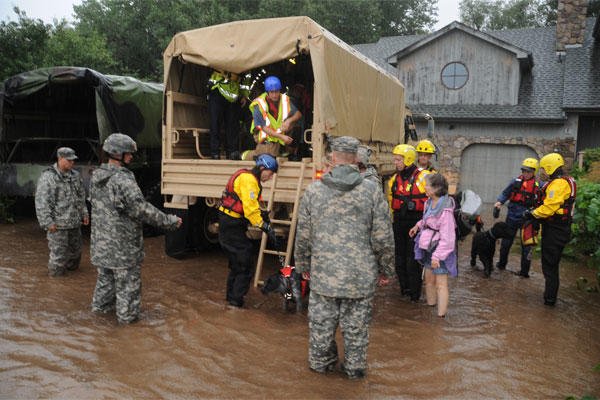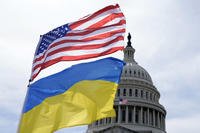With the National Guard sorely hit by drastic budget cuts that that saw personnel and units go away this year, the leadership's search for new missions include more partnerships in foreign countries and perhaps "virtual" air wings across the U.S.
National Guard Gen. Frank Grass says Army and Air National Guard members are already in 65 countries, sometimes involved in State Department civil affairs-type programs, but also joint military training and exercises. Grass said the cost of the programs to the U.S. is anywhere from $9-13 million -- some from State Department funds and some from the Defense Department.
"By 2014, we will have two more," he said, including one in Tonga and, further down the road, a partnership mission in Libya that has been requested by U.S. Africa Command.
"Libya is one they want really bad," Grass said. "We are working through that with [Army Gen.] Dave Rodriguez out in AfriCom."
He said the Guard also hopes to continue partnering with other militaries in peacekeeping missions as it did in recent years in Afghanistan and Iraq. In these cases, airmen from state Guard units have been joined by troops from Estonia, Bosnia and elsewhere to do a rotation.
"We continue to encourage that. We want to do that in peacekeeping operations," he said.
Within the U.S., Grass said he would like to see every state become home to a flying wing -- something former Guard Chief Gen. H. Steven Blum promised prior to the 2008 economic crash that has caused the drastic budget slashing.
Some states currently have several flying wings, he said, while others are struggling to keep a single wing operating. Though he cannot promise a flying wing in every state, he said some may be accomplished by redistributing the Guard's existing complement of wings.
Another possibility is that "virtual" wings could be established in some states, alluding to units of drone aircraft that can be piloted remotely.
Grass noted that a California Air National Guard MQ-1 drone was used recently to observe and track wildfires in California. It could fly all night long, and with the technology on board it could detect hotspots in the region that could spark into another or a new fire.
He conceded there are hurdles to establishing this kind of capability for civilian operation, included legal prohibitions on using military assets that could track individuals.
"I think there's a lot of opportunity in the homeland where we could use those," he said.
Grass, who also sits on the Joint Chiefs of Staff, said he meets regularly with Air Force Chief of Staff Mark Welsh and has found him a strong partner when it comes to supporting the Guard. That kind of relationship has to be welcome among Guard leaders and airmen after the Air Force decided to put a large portion of the forced budget cuts on the Guard rather than the active-duty.
Those cuts -- forced by the Budget Control Act and the sequester -- initially included a reduction in the Air National Guard of 5,100 airmen and the Reserve force by 900 airmen; the active duty cut numbered 3,900 airmen.
The National Defense Authorization Act ultimately directed a reduction of 65 aircraft and approximately 1,400 military billets from the Air National Guard, 57 aircraft from the Air Force Reserve, and 122 aircraft and approximately 6,100 military billets from the active-duty Air Force.
Still, Grass on called the current budget "the most devastating" he can recall.




























